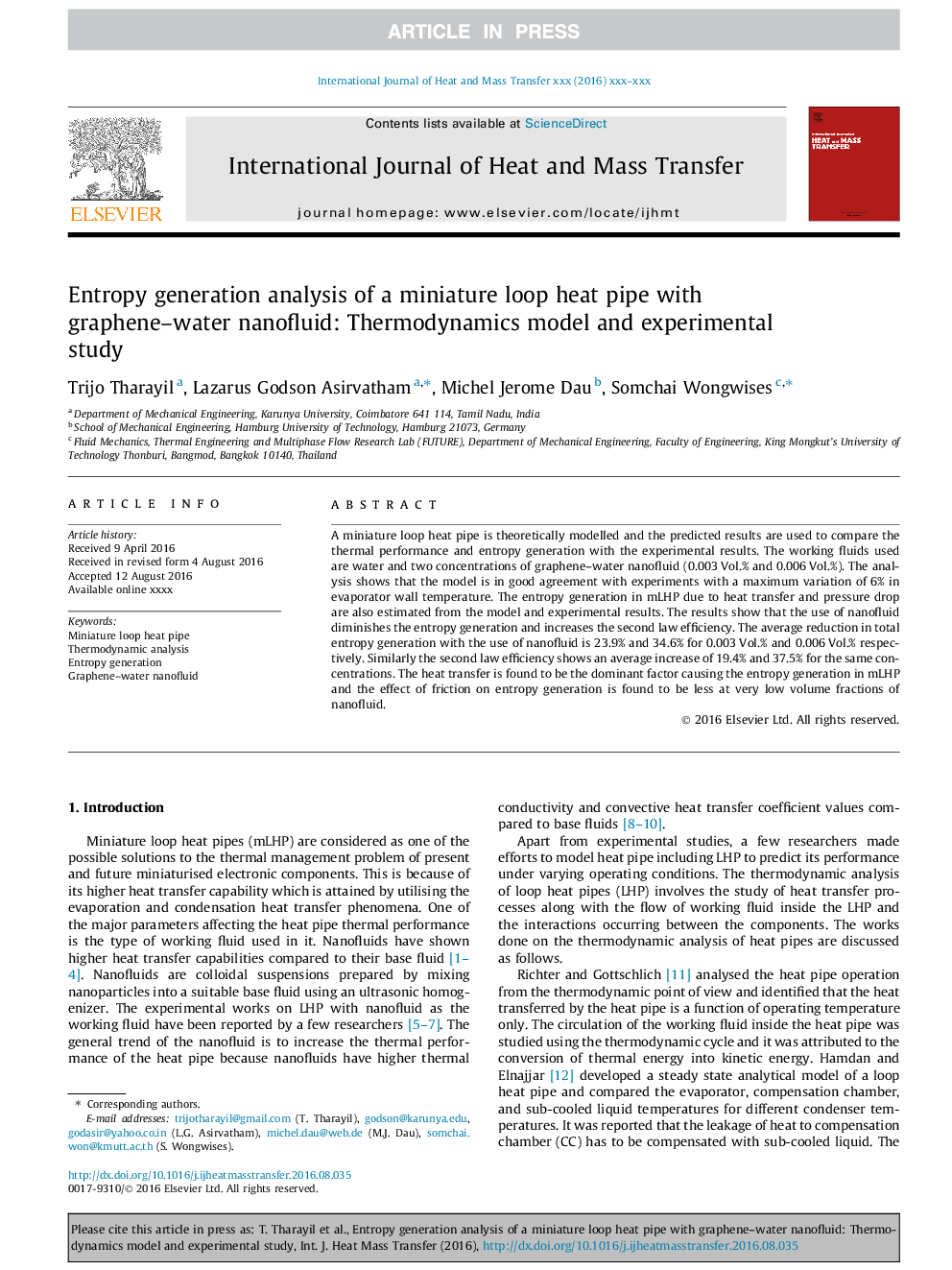| Article ID | Journal | Published Year | Pages | File Type |
|---|---|---|---|---|
| 4994776 | International Journal of Heat and Mass Transfer | 2017 | 15 Pages |
Abstract
A miniature loop heat pipe is theoretically modelled and the predicted results are used to compare the thermal performance and entropy generation with the experimental results. The working fluids used are water and two concentrations of graphene-water nanofluid (0.003Â Vol.% and 0.006Â Vol.%). The analysis shows that the model is in good agreement with experiments with a maximum variation of 6% in evaporator wall temperature. The entropy generation in mLHP due to heat transfer and pressure drop are also estimated from the model and experimental results. The results show that the use of nanofluid diminishes the entropy generation and increases the second law efficiency. The average reduction in total entropy generation with the use of nanofluid is 23.9% and 34.6% for 0.003Â Vol.% and 0.006Â Vol.% respectively. Similarly the second law efficiency shows an average increase of 19.4% and 37.5% for the same concentrations. The heat transfer is found to be the dominant factor causing the entropy generation in mLHP and the effect of friction on entropy generation is found to be less at very low volume fractions of nanofluid.
Related Topics
Physical Sciences and Engineering
Chemical Engineering
Fluid Flow and Transfer Processes
Authors
Trijo Tharayil, Lazarus Godson Asirvatham, Michel Jerome Dau, Somchai Wongwises,
